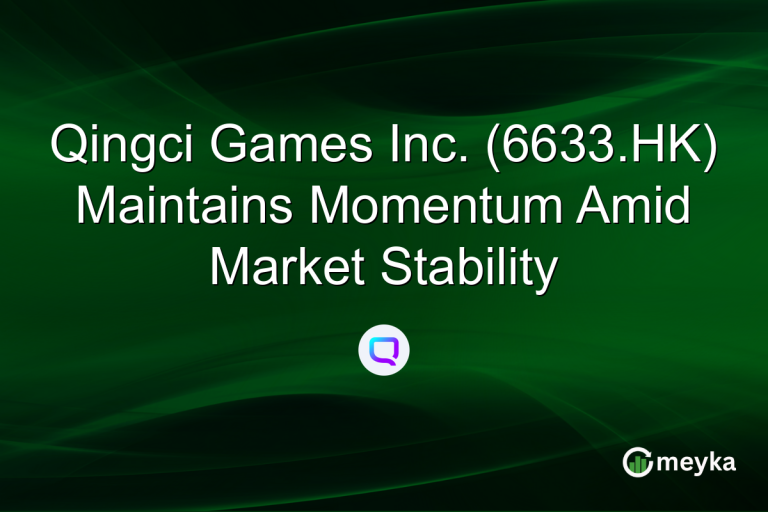KER News Today: Kering H1 2025 Results Show Decline in Yves Saint Laurent Revenue
Kering’s financial performance for the first half of 2025 has caught the attention of investors. With discussions focusing on KER, the company’s latest results show an 11% decline in Yves Saint Laurent’s revenue. As global economic conditions shift, luxury brands like Kering face unique challenges in maintaining growth and market share. Let’s delve into the specifics of Kering’s H1 2025 results and the implications for the luxury market.
Overview of Kering’s H1 2025 Performance
Kering reported a significant 11% decline in Yves Saint Laurent’s revenue, highlighting the brand’s struggles within a shifting luxury market. Overall, the group’s revenue fell by 5% to €7.3 billion. This decline raises concerns as luxury spending adapts to new consumer behaviors. Despite these challenges, Kering’s flagship brand, Gucci, showed resilience with a modest 2% increase in sales, contributing €4 billion to the group’s total revenue.
The company attributed Yves Saint Laurent’s revenue drop to weakening demand in key markets. Particularly in Europe and North America, sales took a hit. Economic headwinds and intensified competition from other luxury brands have pressured Yves Saint Laurent, a pivotal part of Kering’s portfolio.
Kering’s operating income also saw a dip, decreasing by 8% to €1.5 billion, causing a ripple effect across its financial performance. These numbers illustrate the broader challenges faced by luxury brands as they navigate post-pandemic economies. According to a press release, the company continues to focus on innovation and strategic market positioning to recover and drive future growth.
Yves Saint Laurent’s Market Position
The decline of Yves Saint Laurent isn’t isolated. It reflects a broader pattern affecting other high-end fashion houses. The brand, which saw significant growth in previous years, now faces challenges in maintaining its market position.
Much of Yves Saint Laurent’s struggle can be tied to a shift in consumer preferences and economic factors. Luxury consumers have become more selective, often gravitating toward brands with strong sustainability measures and unique product offerings. The brand’s management has recognized these trends and aims to realign its strategies, although changes may take time to manifest.
Amid these shifts, the importance of innovation cannot be understated. Yves Saint Laurent plans to rekindle its appeal through exclusive collections and limited releases, adapting to a customer base that values rarity and exclusivity. While its 11% revenue drop is concerning, strategic initiatives are expected to stabilize and perhaps rejuvenate Yves Saint Laurent’s financial performance.
Impact on Kering’s Overall Strategy
Kering’s financial performance in H1 2025 reflects its current strategic challenges. The company, while managing a portfolio of diverse brands, must rethink its approach. Gucci’s modest growth offers a partial offset to Yves Saint Laurent’s decline, but not enough to reverse overarching trends.
Kering’s strategy now emphasizes market diversification and digital innovation. By enhancing digital sales channels, the group hopes to capture a more engaged customer base. This transition aims to mirror Gucci’s success, a brand that has effectively managed to thrive despite challenging conditions.
Analysts remain mixed, with some forecasting a rebound driven by these strategies. As mentioned in a recent report, Kering is working toward balancing its brand portfolio and mitigating risks associated with its performance in the luxury sector. These efforts are crucial as they navigate the evolving landscape of the global luxury market.
Looking Forward: Opportunities and Challenges
Moving forward, Kering must address both internal and external challenges to optimize its financial performance. Yves Saint Laurent’s decline serves as a wake-up call, prompting a review of brand strategies across the board.
Opportunities in emerging markets such as Asia and the Middle East provide potential for growth. Luxury brands that successfully engage with younger demographics and adapt to digital trends often find themselves more resilient in fluctuating markets. Kering’s focus on sustainability and ethical practices may also offer a competitive edge.
However, the road ahead is not without obstacles. Heightened competition, fluctuating currencies, and economic uncertainties make strategic agility essential. By leveraging its brand portfolio’s diverse appeal, Kering could capitalize on these conditions to drive recovery and future growth. Meyka, known for its real-time market insights, highlights how data-driven strategies can support informed decision-making, aiding in navigating these intricacies.
Final Thoughts
Kering’s H1 2025 results underscore significant challenges, particularly regarding the decline in Yves Saint Laurent’s revenue. As we navigate the complex landscape of the luxury sector, Kering’s efforts to enhance its market strategy and focus on digital innovation stand crucial. By leveraging growth opportunities in emerging markets and aligning with consumer trends, Kering aims to overcome current setbacks. Utilizing platforms like Meyka for real-time analysis can empower investors and aid Kering in achieving a more robust financial performance. The next quarters will reveal how effectively
FAQs
Yves Saint Laurent’s revenue decline was primarily due to weakened demand in key markets like Europe and North America, alongside increased competition.
Kering is focusing on digital innovation and market diversification. They are leveraging Gucci’s success as a model while planning strategic initiatives for Yves Saint Laurent.
Emerging markets such as Asia and the Middle East present significant growth opportunities, along with a focus on digital sales channels and sustainability efforts.
Disclaimer:
This is for information only, not financial advice. Always do your research.






